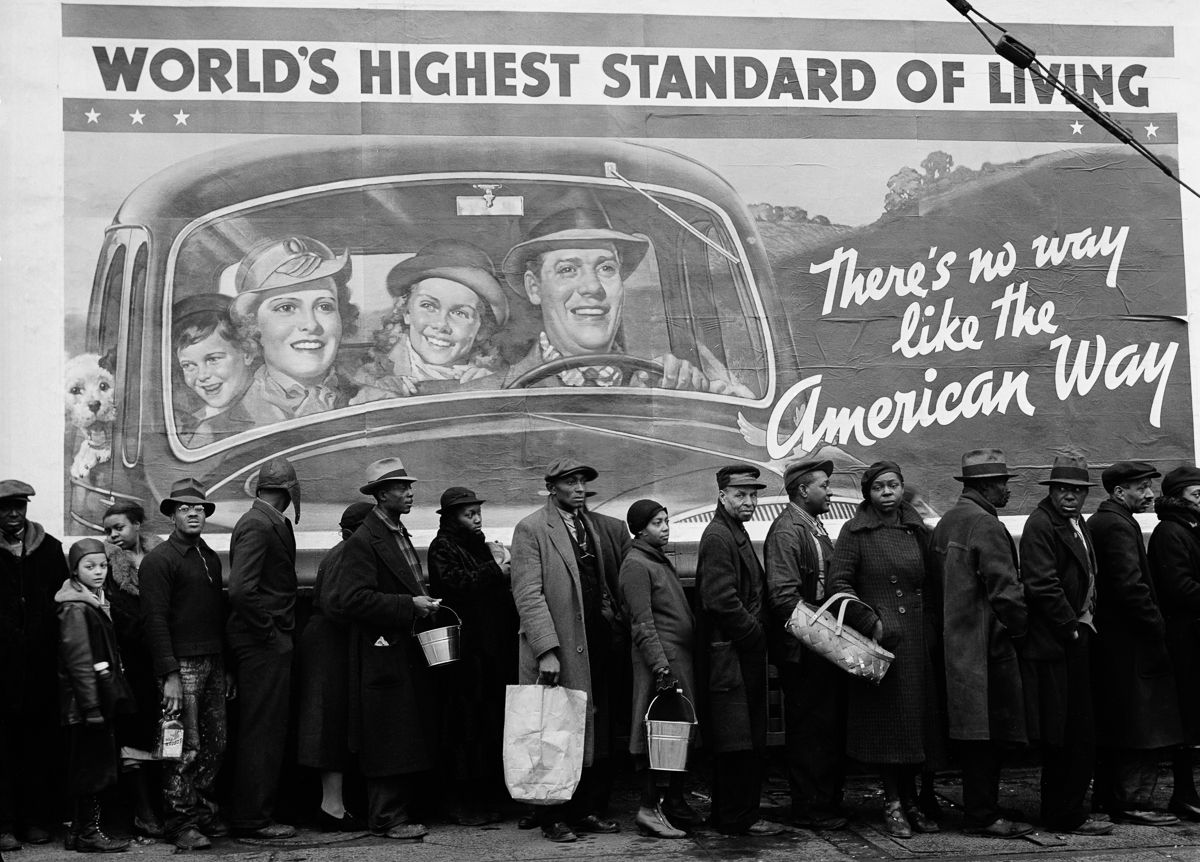
‘There’s no other way like the American way’ sounded a bit ironic during the Great Depression era.
‘American way’ image by Margaret Bourke-White became a symbol of the historical Great Depression decade. Photographer captured it by accident while converting the consequences of the disastrous flooding of the Ohio River in Louisville, Kentucky in 1937.
The creative idea was pretty basic and it played around with a contrast of the people who suffered the flood and lined up for the federal aid, and a billboard with a candy-looking family promoting the American way: WORLD’S HIGHEST STANDARD OF LIVING.
Bourke-White mentioned in her memoirs that she spent just half of an hour to capture the ‘American way’. “People were coming and going but I needed a full line of sharp-looking faces to contrast with a billboard.”
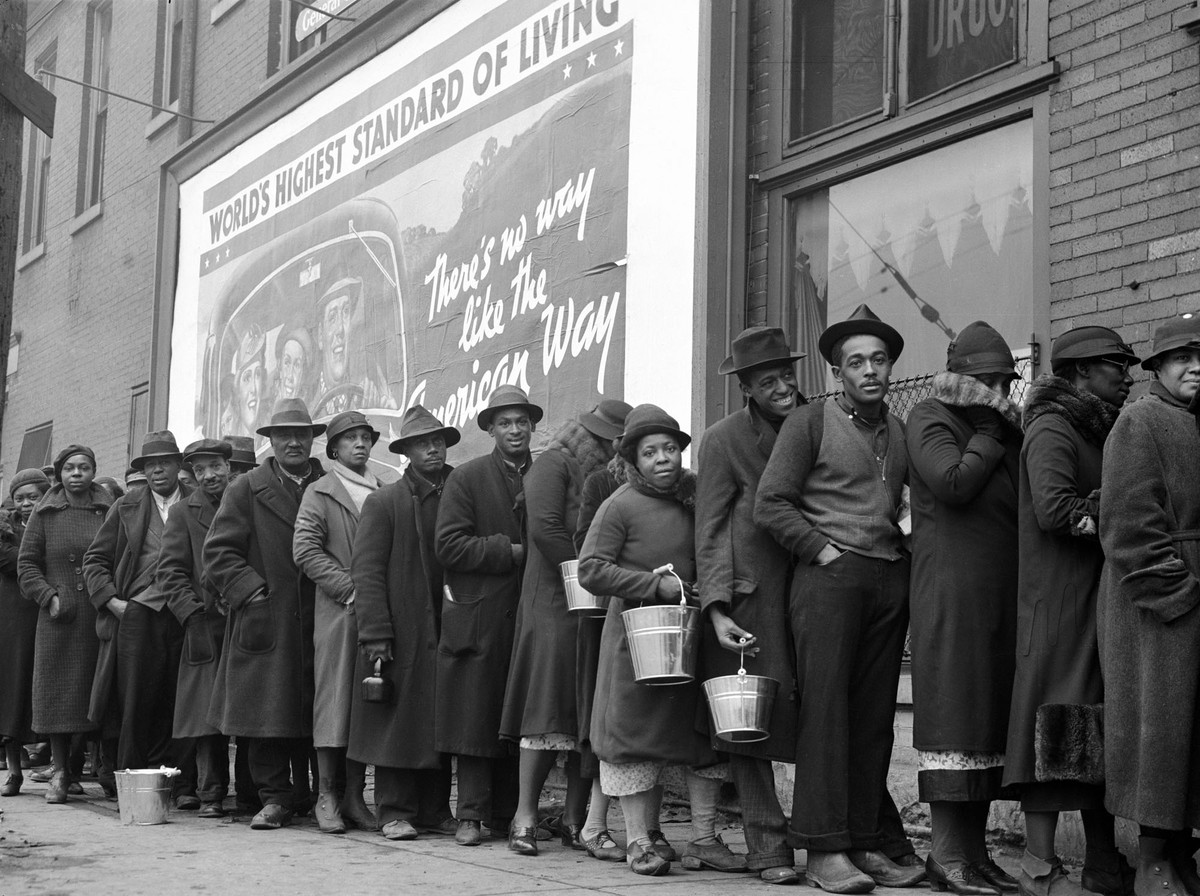
African American flood victims lined up to get food; clothing fr. Red Cross relief station in front of billboard ironically extolling WORLD’S HIGHEST STANDARD OF LIVING/ THERE’S NO WAY LIKE THE AMERICAN WAY.
Note, that ‘American way’ wasn’t the first iconic image by Margaret Bourke-White during the Great Depression era. She was already well known for her Fort Peck Dam construction photo essay that settled in 100 most influential images in history according to Time magazine.
Bourke-White’s images had huge success, and gallerists exhibited here photo essays many times. But one of them, held by the Witkin Gallery, New York, in 1971 was a special one. Bourke-White attended the opening and did several pictures of her own iconic images exhibited on the walls of the gallery. That was the last exhibition Margaret attended as she died in a few months, in August 1971. Nowadays, the ‘American way’ print has appeared at Sotheby’s auction available for $60000.
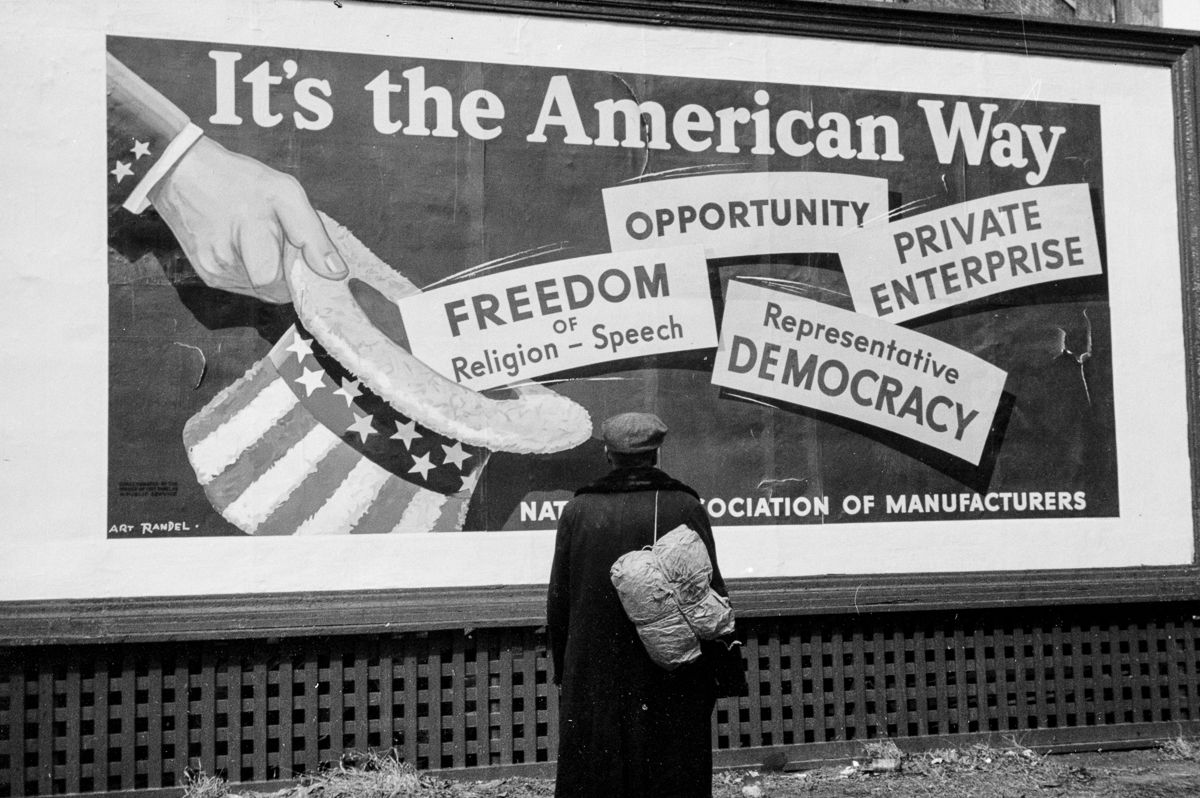
Representative Democracy and a jobless man in Dubuque, Iowa
A nationwide ‘American way’ campaign
The ‘American way’ billboard was a part of the nationwide propaganda campaign by the National Association of Manufacturers. This conservative business community was well known for its desperate critics of the New Deal politics, and the government support of the unions. The idea of the business association was to show the harm that can state regulations may bring to economic.
National Association of Manufacturers tried to plant an idea into American’s minds that economics is just fine, everything goes well, and we should trust the invisible market’s hand. The American way doesn’t need Uncle Sam’s regulations. They also widely manipulated with historical facts. F.e. they promoted WORLD’S SHORTEST WORKING HOURS without mention of the long-years political battles between business owners and unions, fighting for better working conditions.
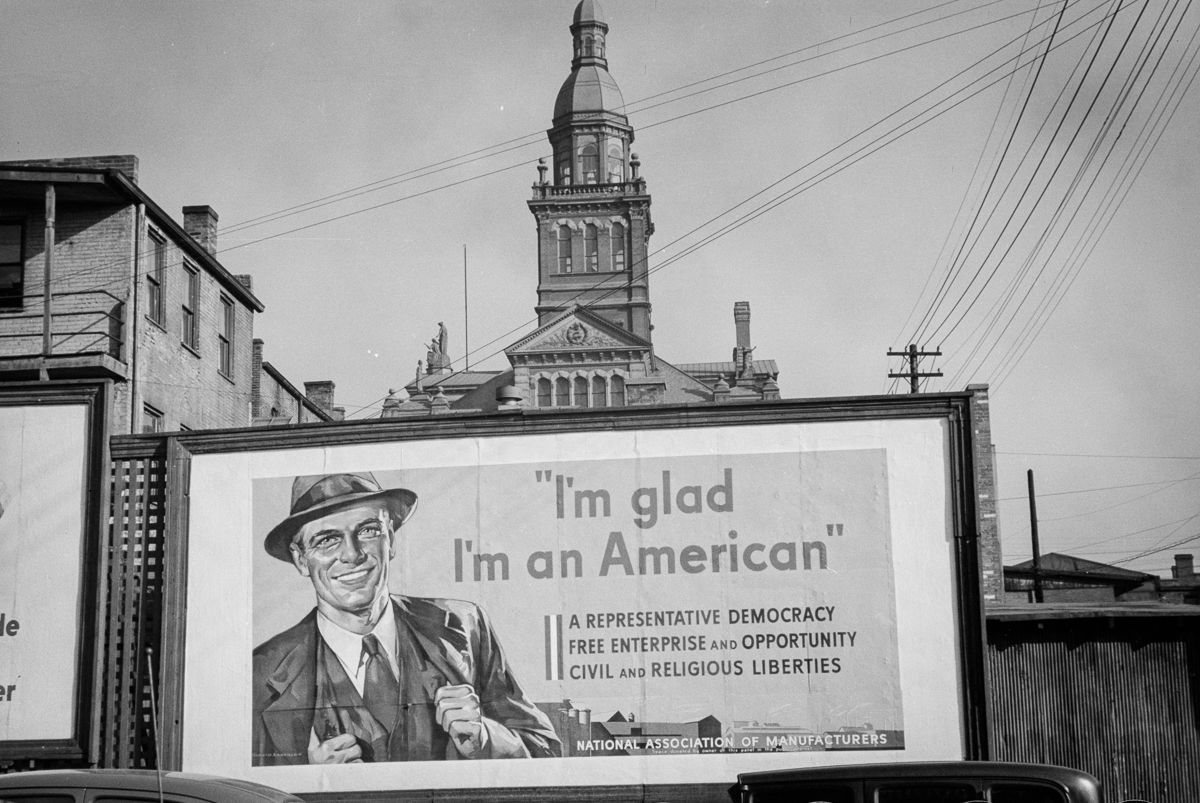
Another billboard of NAM’s campaign in Dubuque, Iowa
‘American way’ billboards, designed by the Campbell-Ewald Company, covered all big cities, reaching 65 million audiences each day. It was a huge marketing affinity, keeping in mind that the US had fewer populations than nowadays.
Another photographer Dorothea Lange, which was already well-known for her ‘Migrant mother’ image captured the same setting that Bourke-White did. Roaming jobless and hopeless people with shiny ‘American way’ billboards behind them.
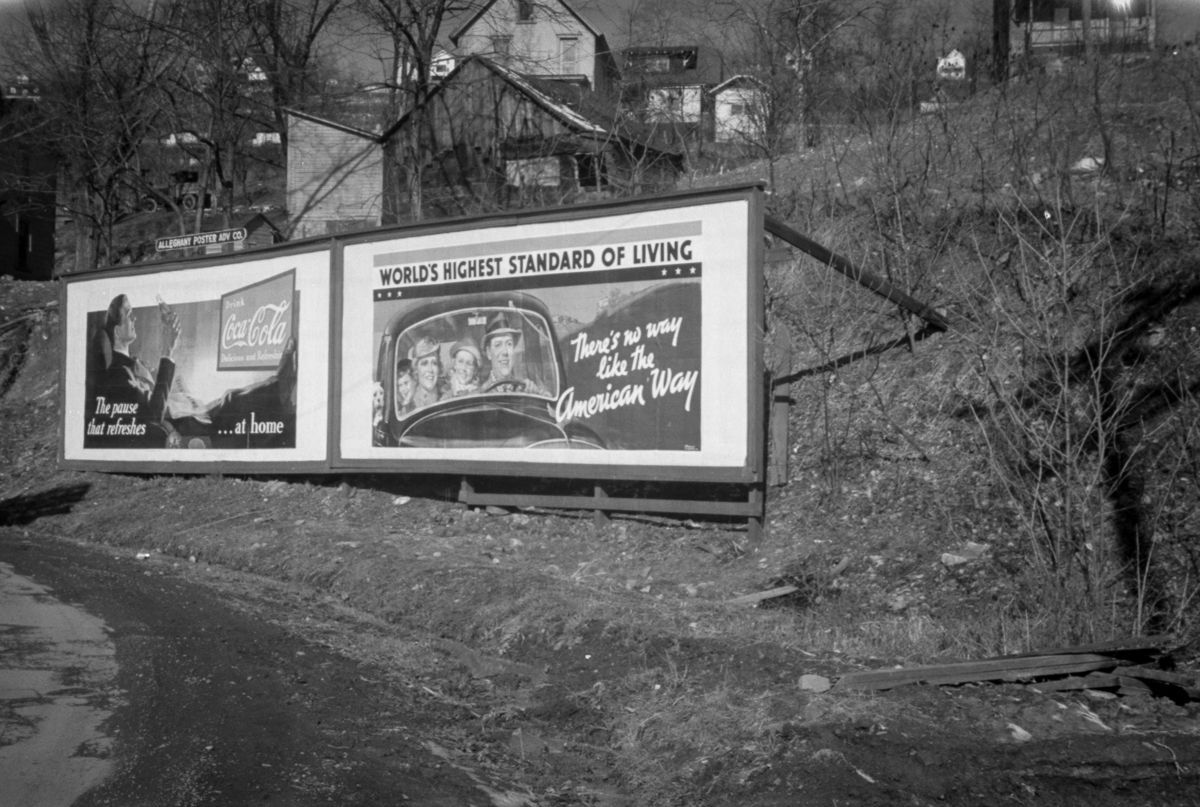
Near Kingwood, West Virginia
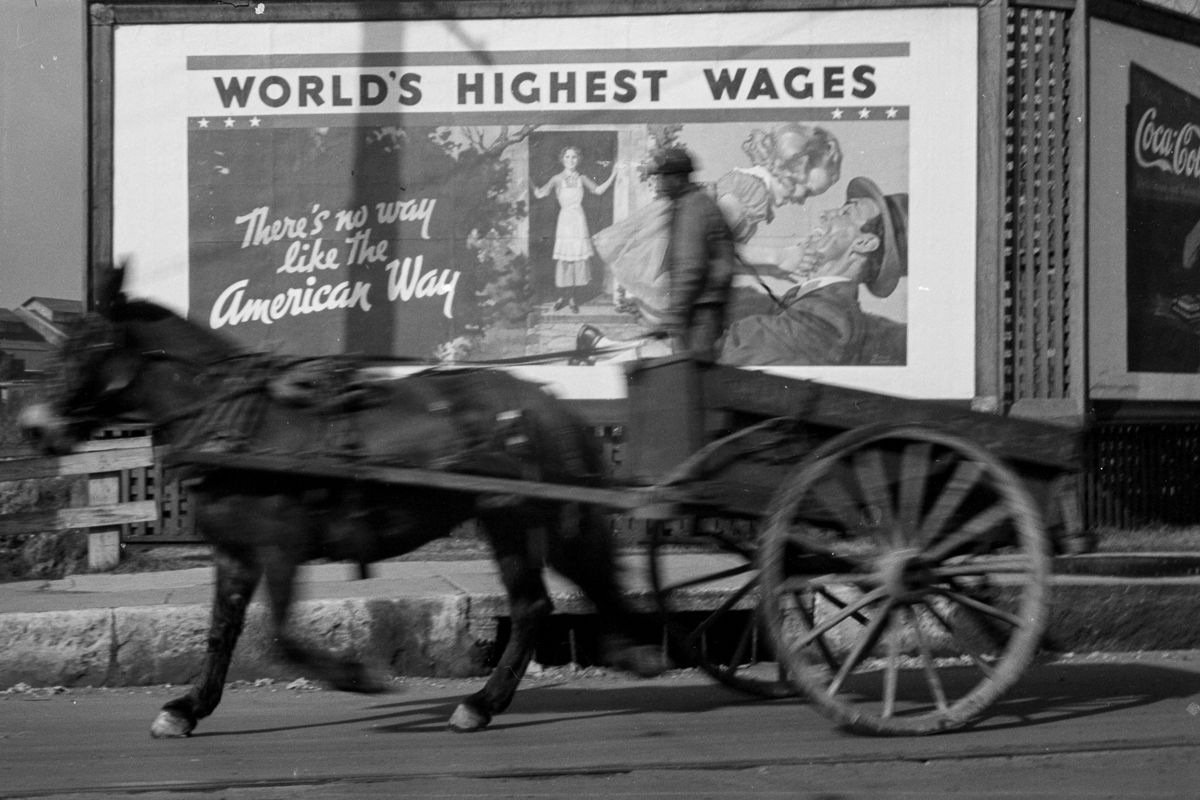
Memphis, Tennessee during the Great Ohio River Flood
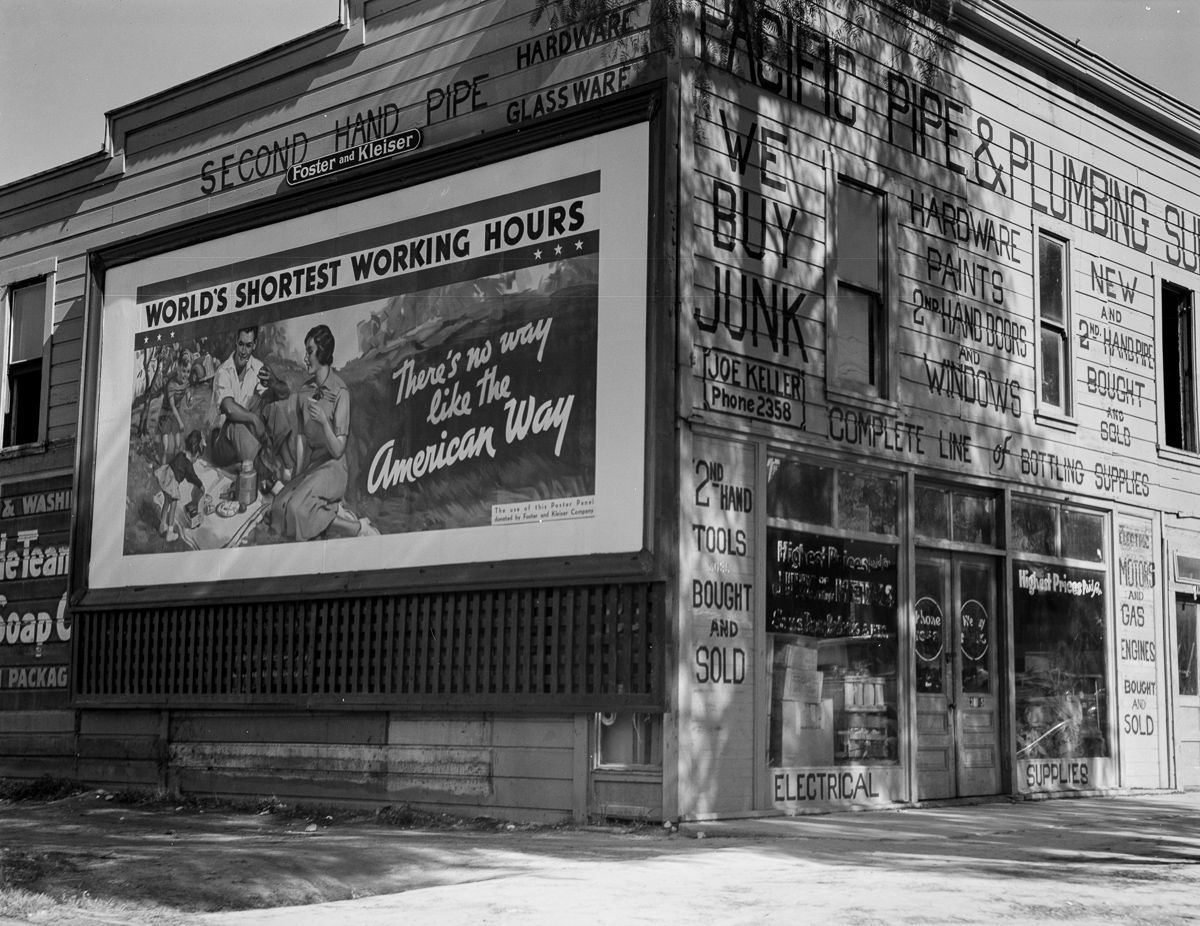
Highway 99 in California
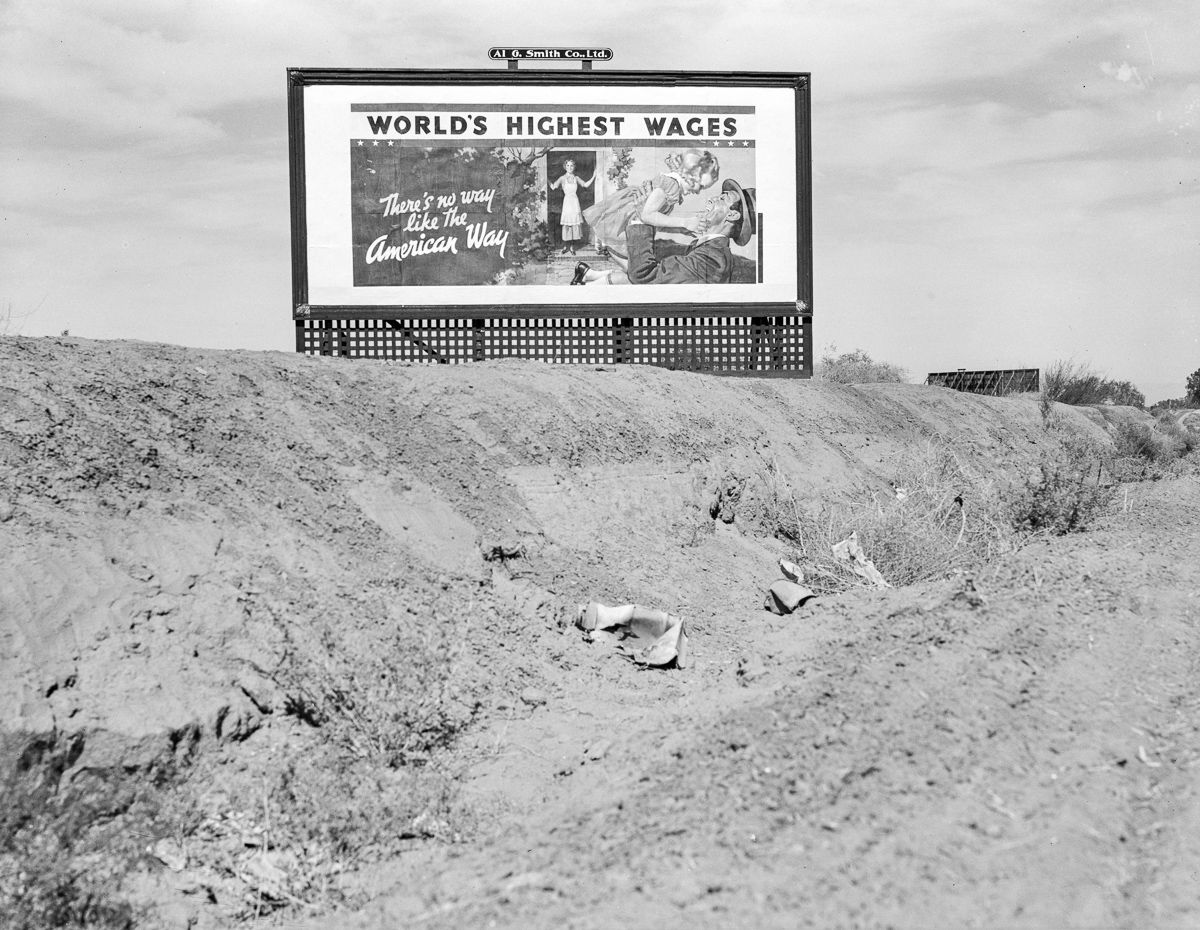
Another sample from California.
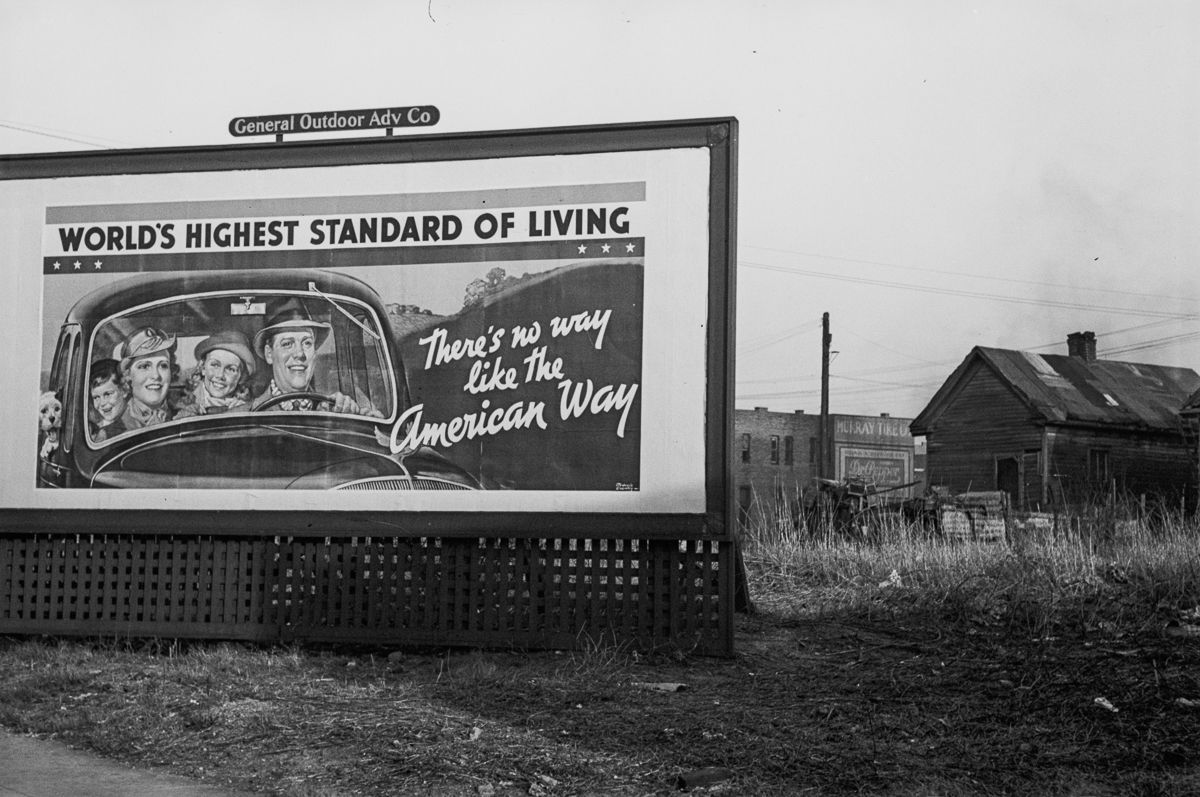
Birmingham, Alabama
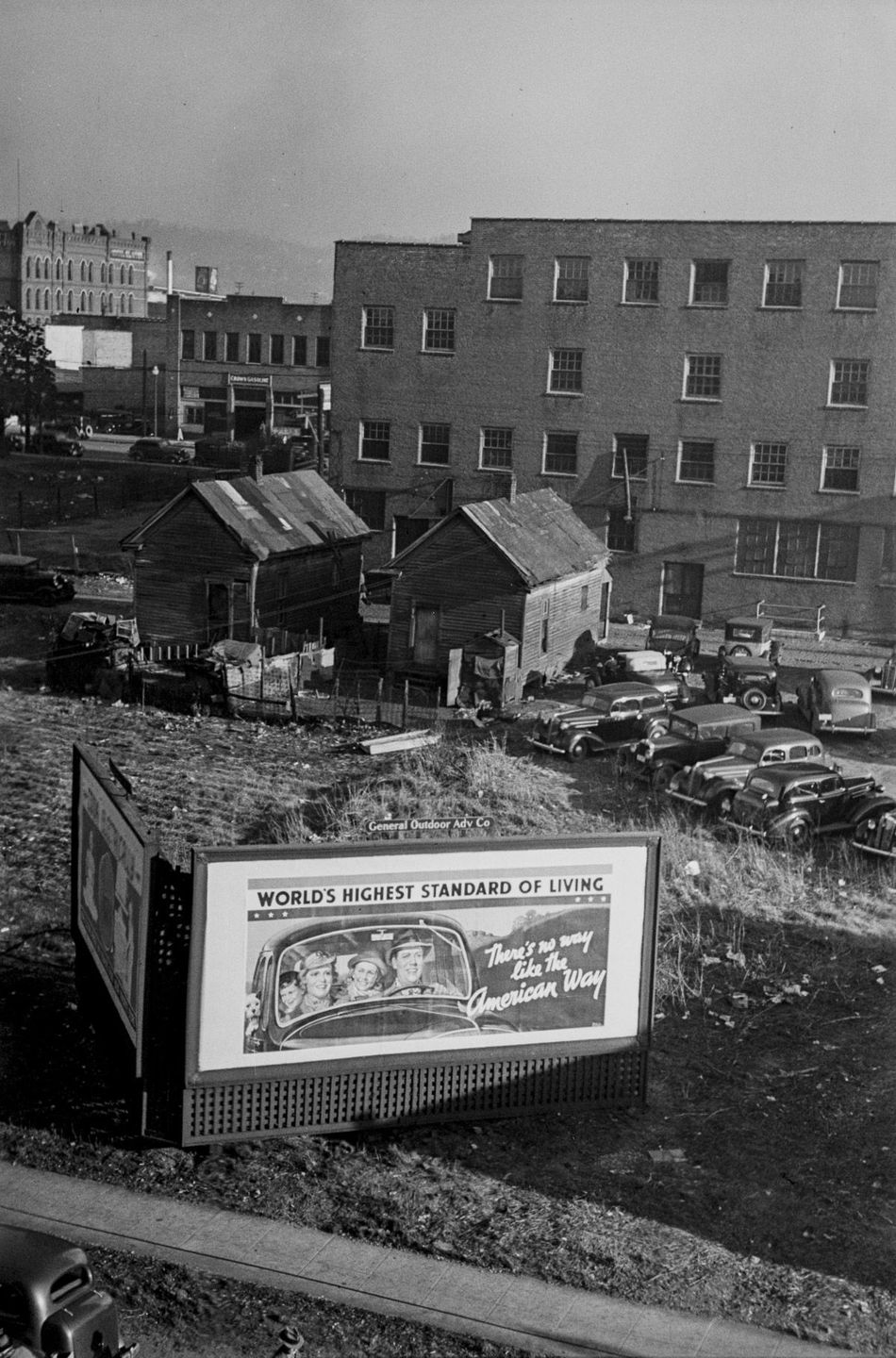
Birmingham, Alabama
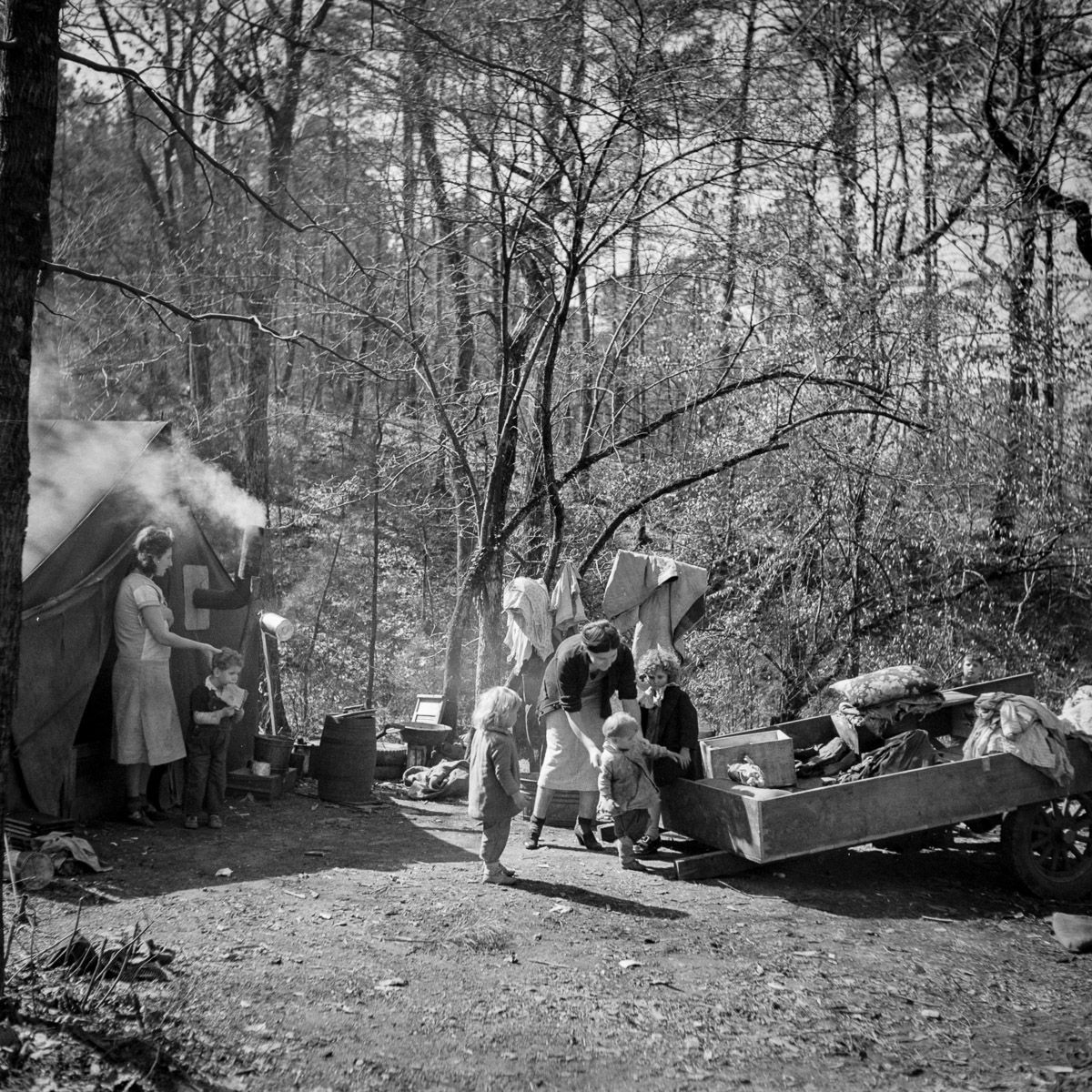
A migrant encampment in Birmingham, Alabama